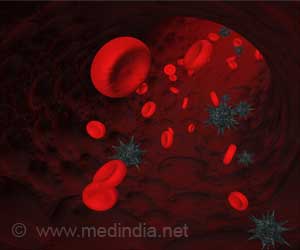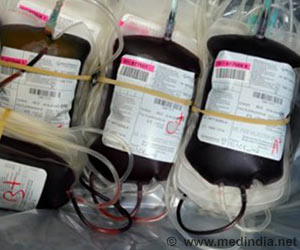But in about 400 million people worldwide, G6PD is deficient, leaving blood cells vulnerable to oxidation and a destructive process known as hemolysis, which can result in severe, potentially life-threatening anemia.
Infection is the most common cause of hemolysis in G6PD-deficient individuals, but certain foods and medications may precipitate the destruction of blood cells, especially in children.
Ibuprofen, commonly used for pain relief in pediatric medicine, is included on the list of suspected hemolysis-inducing drugs in G6PD-deficient children.
“Our finding, that ibuprofen can be used safely in children with G6PD deficiency, is important, particularly because of the significant role that ibuprofen has in pediatric pain and fever management,” explained Glenn Isaacson, MD, FAAP, Professor of Otolaryngology – Head & Neck Surgery and Pediatrics at the Lewis Katz School of Medicine, Director of Pediatric Otolaryngology at Temple University Hospital, and senior investigator on the new study.
The review was published online in the journal The Laryngoscope.
G6PD deficiency is the most commonly occurring defect in red blood cells. It is notably widespread in countries in Africa, the Mediterranean, the Middle East, and Southeast Asia. In the United States alone, about 11 percent of males of African descent are affected by G6PD deficiency.
Affected adults rarely show symptoms, but for newborns and young children, infections or exposure to medications can induce severe anemia and hyperbilirubinemia (excess bilirubin in the blood) and, in rare instances, can cause death.
“For many medications thought to increase risk of hemolysis in G6PD-deficient patients, there actually is very little evidence to support an association,” Dr. Isaacson explained.
“Ibuprofen is a key alternative to opioid pain medicines, so it is important to know if it can be used safely in children who lack G6PD.”
To assess the relationship between ibuprofen and hemolysis in G6PD-deficient children, Dr. Isaacson, Ashley N. Pankey, a fourth-year Lewis Katz School of Medicine student and lead author on the new report, and Ashwin Chandar, MD, Assistant Professor of Medicine at the Lewis Katz School of Medicine, carried out a systematic review of published literature.
The review focused in particular on three studies, including one prospective study, which showed no evidence of a link between hemolysis and exposure to ibuprofen or other non-steroidal anti-inflammatory drugs in G6PD-deficient children. Two additional population studies from the Middle East implicated ibuprofen as a rare cause of hemolytic anemia.
The researchers also searched adverse drug reaction databases for the United States Food and Drug Administration, European Medicine Agency, and Health Canada.
Reports of hemolytic reactions following exposure to ibuprofen among children were exceedingly rare, occurring in between 0 and 1 in 100 million children.
“Our findings are encouraging. They suggest that ibuprofen is a safe therapeutic option for pain relief in children with G6PD deficiency,” Dr. Isaacson said. “Moreover, if symptoms appear, they can be reversed when treatment with the triggering agent is stopped.”
“Given that millions of children are affected by this disease worldwide, our study will greatly contribute to future efforts to control pain and prevent unnecessary suffering in this population,” Pankey added.
Source: Eurekalert



